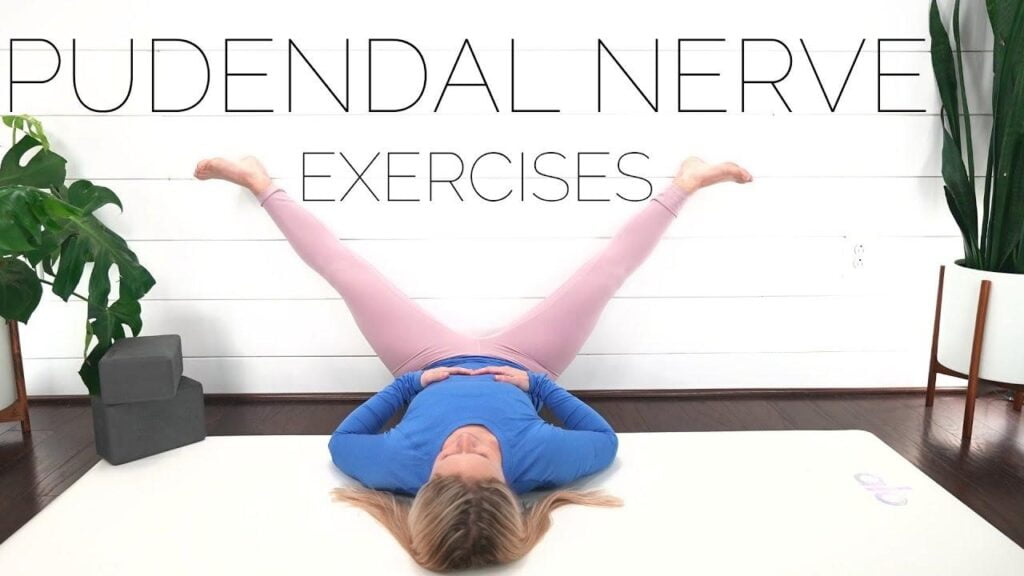Pudendal neuralgia, a chronic pain condition affecting the pudendal nerve, can significantly impact your quality of life. This nerve, located in the pelvis, provides sensation to the genitals, perineum, and anus.
When irritated or compressed, it can trigger various unpleasant symptoms, including:
- Stinging, burning, or aching pain in the vulva, penis, scrotum, perineum, or rectum
- Numbness or tingling in the same areas
- Difficulty with urination or bowel movements
- Painful sexual intercourse
While the exact cause of pudendal neuralgia remains elusive, contributing factors can include:
- Trauma or injury to the pelvis, such as childbirth or cycling accidents
- Muscle tightness in the pelvic floor
- Nerve compression from anatomical variations or tumors
- Medical conditions like endometriosis or prostatitis
If you suspect you have pudendal neuralgia, consult a healthcare professional for diagnosis and proper management. While there’s no cure, a combination of treatments, including medication, nerve blocks, and pudendal neuralgia exercises, can offer significant relief.
Exercises for Pudendal Neuralgia Relief
Targeted exercises play a crucial role in managing pudendal neuralgia. They can help:
- Improve pelvic floor muscle function
- Reduce nerve compression
- Increase flexibility and range of motion
- Promote pain relief and healing

Here are some key exercises to consider, but remember, it’s crucial to work with a qualified physical therapist or pelvic floor specialist to ensure proper technique and avoid exacerbating symptoms:
Pelvic Floor Kegel Exercises
- Benefits: Strengthen and control pelvic floor muscles, improving blood flow and reducing nerve compression.
- How to do it: While lying on your back with knees bent and feet flat, tighten the muscles around your rectum and vagina as if stopping urination. Hold for 5 seconds, then relax for 10 seconds. Repeat 10 times, 3 times a day.
Butterfly Stretch
- Benefits: Opens up the hips and inner thighs, reducing tension on the pudendal nerve.
- How to do it: Sit on the floor with the soles of your feet together and knees bent outwards. Gently press your knees down towards the floor while keeping your back straight. Hold for 30 seconds, then relax. Repeat 5 times.
Cat-Cow Pose
- Benefits: Mobilizes the spine and stretches the pelvic floor muscles.
- How to do it: Start on all fours with hands under shoulders and knees under hips. Inhale and arch your back, dropping your belly and looking up. Exhale and round your back, tucking your chin to your chest. Repeat 10 times, flowing with your breath.
Bridge Pose
- Benefits: Strengthens the core and glutes, stabilizing the pelvis and reducing nerve compression.
- How to do it: Lie on your back with knees bent and feet flat. Lift your hips off the ground, squeezing your glutes and keeping your core engaged. Hold for 5 seconds, then slowly lower back down. Repeat 10 times.
Happy Baby Pose
- Benefits: Stretches the hamstrings and inner thighs, promoting pelvic floor relaxation.
- How to do it: Lie on your back with knees bent and feet flat. Bring your knees towards your chest and grab the outsides of your feet with your hands. Gently pull your feet towards you, opening your hips and inner thighs. Hold for 30 seconds, then relax. Repeat 5 times.
Remember: Listen to your body, stop if you experience any pain, and gradually increase the intensity and duration of exercises as tolerated.
Holistic Strategies for Pudendal Neuralgia Management

While exercises are powerful tools, consider these additional strategies for holistic management:
- Heat therapy: Applying heat to the perineum can increase blood flow and promote muscle relaxation.
- Ice therapy: Applying ice packs to the perineum for short periods can reduce inflammation and pain.
- Mindfulness and relaxation techniques: Practices like meditation and deep breathing can help manage stress and pain perception.
- Lifestyle modifications: Maintaining a healthy weight, avoiding triggers like prolonged sitting, and practicing good posture can contribute to pain relief.
Seeking Support and Building Resilience
Living with pudendal neuralgia can be a lonely and isolating experience. Chronic pain and discomfort can significantly impact your daily life, work, and relationships. But remember, you’re not alone in this journey. Numerous resources and support systems are available to help you cope with the challenges and build resilience.
Finding a Therapist or Counselor
Dealing with chronic pain can take a toll on your mental and emotional well-being. Seeking professional help from a therapist or counselor specializing in chronic pain management can be immensely beneficial. They can provide you with tools and strategies to manage stress, anxiety, and depression often associated with chronic pain conditions.
Cognitive-behavioral therapy (CBT) is a particularly effective approach for chronic pain management. It helps you identify and modify negative thought patterns that can exacerbate pain and develop coping mechanisms to manage stress and improve your overall well-being.
Strategies for Long-Term Management

Living with pudendal neuralgia requires resilience and a proactive approach to managing your condition. Here are some strategies that can help you build resilience and navigate the challenges:
- Acceptance and self-compassion: Accepting your condition and practicing self-compassion are crucial steps in managing chronic pain. Remember, you’re not defined by your pain, and it’s okay to have bad days. Instead of fighting against your pain, focus on acknowledging it and practicing self-care.
- Prioritize self-care: Make self-care a non-negotiable part of your routine. This includes getting enough sleep, eating a healthy diet, exercising regularly (within your limitations), and engaging in activities you enjoy. Taking care of your physical and mental health will equip you with the strength to manage your pain more effectively.
- Set realistic goals: Don’t try to do too much too soon. Set small, achievable goals for yourself, whether it’s completing a specific exercise routine or attending a support group meeting. Celebrating your achievements, no matter how small, will boost your confidence and motivation.
- Focus on what you can control: You can’t control the pain, but you can control your response to it. Focus on the things you can control, such as your exercise routine, relaxation techniques, and how you choose to approach your pain. This sense of empowerment can make a significant difference in your overall well-being.
Remember, managing pudendal neuralgia is a marathon, not a sprint. Be patient with yourself, celebrate your progress, and don’t hesitate to seek support when needed. With the right tools, resources, and a positive mindset, you can effectively manage your condition and live a fulfilling life.
Additional Resources and References
- The National Pudendal Neuralgia Association (NPNA): https://www.pudendalassociation.org/
- The American Chronic Pain Association: https://www.acpanow.com/
- The Mayo Clinic: https://connect.mayoclinic.org/discussion/pudendal-nerve-entrapmentneuropathydamage/
- Pudendal Neuralgia: A Comprehensive Guide: https://www.ncbi.nlm.nih.gov/books/NBK562246/ by Dr. Howard C. Bussey
Disclaimer: This article is intended for informational purposes only and should not be interpreted as medical advice. Please consult with a healthcare professional for diagnosis and treatment of pudendal neuralgia.
FAQs about Pudendal Neuralgia Exercises
What types of exercises are helpful for pudendal neuralgia?
Several types of exercises can benefit individuals with pudendal neuralgia, each targeting different aspects of pain management:
- Pelvic floor Kegel exercises: These strengthen and control pelvic floor muscles, potentially improving blood flow and reducing nerve compression.
- Stretching exercises: Butterfly stretch, Cat-Cow pose, and Happy Baby pose can open up the hips and inner thighs, reducing tension on the pudendal nerve.
- Strengthening exercises: Bridges and core exercises can stabilize the pelvis and potentially minimize nerve compression.
How often and for how long should I do these exercises?
Start with gentle exercises, gradually increasing intensity and duration as tolerated. Generally, aim for 10 repetitions of each exercise for 3 sets, 2-3 times per day. Listen to your body, stop if you experience pain, and consult a healthcare professional for personalized guidance.
Are there any exercises I should avoid with pudendal neuralgia?
Exercises that put excessive strain on the pelvic floor, like heavy lifting or intense abdominal crunches, should be avoided. Consult your healthcare professional or physical therapist for specific exercises to steer clear of based on your unique condition.
How soon can I expect to see results from doing pudendal neuralgia exercises?
Results can vary depending on the severity of your condition and your consistency with exercise. Some individuals experience pain relief within weeks, while others may need several months to see significant improvement. Patience and continued practice are key.
Can I do pudendal neuralgia exercises if I’m pregnant or have had a recent childbirth?
Modified Kegel exercises and gentle stretches under the guidance of a physical therapist are generally safe during pregnancy and postpartum. However, avoid strenuous exercises and consult your healthcare professional before starting any new exercise program.


